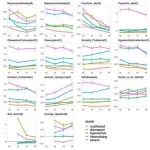(Press-News.org)
Humans can benefit significantly from symbiotic relationships with probiotics—live bacteria and microorganisms that influence the gut microbiota. When consumed in appropriate amounts, probiotics can promote gut health, support the immune system, and enhance metabolism.
Probiotics, widely regarded as a treasure in the field of microbiology, are currently finding new applications in medicine, animal care, and the food industry. However, it is often challenging to use probiotics in their existing form, owing to varying effects of different strains on the health of different individuals. Consequently, finding concrete evidence to support the proposed benefits of probiotics is also difficult.
Fortunately, these challenges can be addressed owing to the tremendous progress that we have witnessed in genetic engineering over the past decade, especially after the introduction of the immensely popular CRISPR-Cas editing system. By editing, deleting, or introducing specific genes with these tools, we can tailor the activities of probiotic organisms to fit our health needs. To support the researchers interested in pushing the limits of the field, Professor Nan Peng from the Huazhong Agricultural University, China, along with his colleagues, recently published a review article in Volume 5 of BioDesign Research on September 29, 2023, summarizing the latest advances and hurdles related to the engineering of probiotics with CRISPR-Cas. “As important genome editing tools, CRISPR-Cas systems have opened the window to new improvements in genome editing dedicated to probiotics thanks to their high efficiency, flexibility, and specificity,” remarks Prof. Peng.
The review begins with a concise overview of CRISPR-Cas systems discovered in microorganisms. In their natural forms, CRISPR-Cas systems are defense tools for bacteria against viruses/phages. When a bacterium survives a viral attack, it stores some viral DNA in the form of CRISPR sequences. If the same virus appears again, the bacterium produces ‘guide RNA’ molecules based on the CRISPR sequences stored as memories. These molecules guide Cas proteins, which act like molecular scissors, to cleave and neutralize the targeted viral DNA. Over time, scientists have found methods to leverage these molecular mechanisms as toolkits for precise gene editing.
In subsequent sections, the research team summarized the key CRISPR-Cas systems that are used to edit genes in several types of probiotic organisms. These include lactic acid bacteria, yeast, Bacillus, and others. Subsequently, they highlighted recent developments on the therapeutic applications of probiotics that were genetically modified through the CRISPR-based systems. “The intake of probiotics has been gradually demonstrated as an effective strategy to prevent or mitigate diseases in humans. Among various probiotics evaluated, genetically modified probiotic strains can have stronger or new properties and exhibit greater research and application value,” states Prof. Peng. Certain examples include the use of Escherichia coli (E. coli) to eliminate antibiotic-resistant bacteria in the gut and protect it against harmful E. coli infections, the use of yeast to treat inflammatory bowel disease, and the use of Bacillus subtilis to regulate metabolism and help prevent obesity.
Finally, the article presents unsolved issues for the CRISPR-based genetic modification of probiotics and the obstacles to their clinical application, alongside potential strategies to address them. A few of these strategies include the development of CRISPR tools to reduce errors during cleaving and gene insertion, optimization of the editing system, using alternative Cas9 proteins (such as dead-Cas9), and ensuring the stability of engineered strains. “Undoubtedly, the use of engineered probiotics to promote the development of animal and human health industries will face great opportunities and challenges in the future,” concludes Prof. Peng, optimistic about what could be just over the horizon in this exciting and flourishing field.
Let us hope that these research efforts allow us to lead healthier lives sooner rather than later!
###
References
Authors
Ling Liu1,2, Shimaa Elsayed Helal1, and Nan Peng1
Affiliations
1National Key Laboratory of Agricultural Microbiology, Hubei Hongshan Laboratory, College of Life Science and Technology, Huazhong Agricultural University
2CABIO Biotech (Wuhan) Co. Ltd.
About Professor Nan Peng from Huazhong Agricultural University
Dr. Nan Peng obtained his bachelor’s and Ph.D. degrees in Bioengineering from Huazhong Agricultural University in 2004 and 2009, respectively. Shortly afterwards, he obtained a position as a Lecturer, before being promoted to the post of Professor in 2018. He has been actively engaged in research involving the screening, engineering, and application of beneficial microorganisms, with a recent focus on CRISPR-Cas systems and the fermentation and production of lactic acid bacteria. He has published over a hundred research papers on these topics and has obtained six patents.
END
Synthetic biology is a growing discipline of science that involves redesigning naturally occurring organisms to express new, useful attributes. These engineered organisms can be used to address issues unresolved by conventional methods.
Broad-host-range (BHR) synthetic biology is an emerging domain that aims to expand the pool of model hosts or ‘chassis,’ by utilizing the rich diversity of the naturally evolving microbial world. The chassis provides a platform for the expression of ...
By Courtney Price, Texas A&M University School of Veterinary Medicine & Biomedical Sciences
Researchers at Texas A&M University have already shown that paternal drinking habits prior to conception can have a negative effect on fetal development — with semen from men who regularly consume alcohol impacting placenta development, fetal alcohol syndrome (FAS)-associated brain and facial defects, and even IVF outcomes.
In an article published this month in Andrology, ...
New York, NY | December 13, 2023 – The CUNY Graduate School of Public Health and Health Policy (CUNY SPH) has partnered with the United Nations Population Fund (UNFPA) on the 16 Days of Activism against Gender-Based Violence campaign, an initiative to bring global awareness to the widespread issue of gender-based violence, a pervasive public health threat.
The 16 Days campaign was launched in 1991 at the first Women’s Global Leadership Institute held by the Center for Global Women’s Leadership (CGWL), with the goal of raising awareness ...
NEWPORT NEWS, VA – Superconducting technologies are the lifeblood of the U.S. Department of Energy’s Thomas Jefferson National Accelerator Facility in its ongoing mission to probe the quarks and gluons inhabiting the quantum universe.
Superconducting radiofrequency (SRF) technology, a core competency of Jefferson Lab, is used to accelerate the fundamental electron particles in the lab’s Continuous Electron Beam Accelerator Facility, enabling researchers from around the world to conduct cutting-edge experiments to study the fundamental building blocks of matter. With the investment from DOE’s Office ...
Is it possible to identify infants more likely to be on the autism spectrum through telehealth assessments? The UC Davis MIND Institute’s Meagan Talbott, a professional researcher in the Department of Psychiatry and Behavioral Sciences, has received a $3.2 million grant to seek the answer to that question. The five-year grant is from the National Institute of Child Health and Human Development.
Talbott is now recruiting for a national study of 120 infants, 6-12 months of age, who are showing delays or differences in their development. Parents might have questions about autism or other conditions, but ...
About 40 percent of people over age 65 suffer some form of age-related memory loss, which puts them at higher risk for developing dementia and Alzheimer’s disease. However, there are currently no approved methods for preventing memory loss with age.
Tim Jarome, associate professor of neurobiology in the Virginia Tech College of Agriculture and Life Sciences’ School of Animal Sciences is hoping to change that, aided by a $433,000 grant from the National Institute on Aging, which is part of the National Institutes of Health.
Jarome and his research partner, Assistant Professor Sydney Trask of Purdue University’s Department ...
Delivering the two-dose mpox vaccine, called JYNNEOS, in smaller than the usual FDA-approved doses, and by injection between layers of the skin rather than by the standard route under the skin, produced a detectable immune response, a new study shows. This also occurred regardless of whether people were living with or without HIV.
Led by researchers at NYU Grossman School of Medicine, the study showed no significant difference in the strength of the immune response (as gauged by the amount of detectable IgG antibodies, immune proteins that help kill the mpox virus) between most of those who received their vaccine injections in small doses ...
UNIVERSITY PARK, Pa. — While screen time is generally known to affect sleep, new research suggests that interactive engagement, such as texting friends or playing video games, delays and reduces the time spent asleep to a greater extent than passive screen time, like watching television — especially for teens.
The research, which published today (Dec. 13) in the Journal of Adolescent Health, demonstrates that adolescents at age 15 who used screens to communicate with friends or play video games in the hour before bed took 30 minutes longer to fall asleep than if they had refrained from interactive screen time. But it wasn’t just interactive screen time ...
Santa Monica, Calif. (Dec. 12, 2023) – A fascinating link between regular exercise and better brain health has been revealed, according to an international study that included a team of clinical researchers from Pacific Neuroscience Institute’s Brain Health Center, located at Providence Saint John’s Health Center.
The research, detailed in the paper "Exercise-Related Physical Activity Relates to Brain Volumes in 10,125 Individuals," was published this week in the Journal of Alzheimer’s Disease and shows being physically active is related to increased size of brain areas important ...
It’s a hidden cause of diarrhea and the development of the disease is poorly understood. Multiple factors work against the diagnosis of microscopic colitis, an inflammatory digestive disease, because the symptom distress compared to patients with other causes of chronic diarrhea remains unknown. Now, a new study published in journal Gastro Hep Advances, shows patients may be unsure of a diagnosis based on their colonoscopy results, patients may not be prescribed the proper medications, and many patients may remain symptomatic one year after colonoscopy.
The ...








